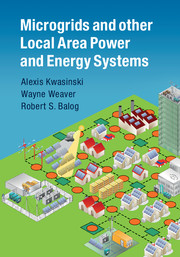1 - Introduction
from Part I - Motivation
Published online by Cambridge University Press: 05 July 2016
Summary
Basic concepts
Electrification is widely regarded as the single greatest engineering achievement of the twentieth century. The electrical power grid, the system that interconnects and distributes electrical energy, is the foundation of the built environment that supports modern societies and their economies. Yet, electric power grids are showing increased signs of deterioration due to aging equipment and usage that stresses these systems beyond their original design and safety margins. Simply stated, the current technology is inadequate to meet the evolving and growing needs of society. The last decade saw a number of poignant cases where problems in the energy system wreaked havoc and devastation. Singular instances, including the 2000 and 2001 California electricity energy crisis, the 2003 Northeast blackout, and widespread cases of expansive outages caused by natural disasters should all serve as wake-up calls for infrastructure improvement. Looking toward the future, simply patching the existing system will not alleviate the power-delivery congestion, which creates local markets with extremely high marginal pricing and prevents widespread penetration of renewable energy resources such as wind and residential-scale photovoltaic systems.
Many of the energy sources that powered the last century are dwindling. Even if new deposits of these finite energy resources are discovered, their conversion to electrical energy will remain one of the largest contributors to global greenhouse gas emissions and other environmental hazards. Nuclear power, once seen as an alternative to fossil fuels, has lost widespread support since the nuclear event at the Japanese Fukushima #1 Nuclear Power Plant. The move to more environmentally friendly technologies, so-called renewable energy sources, adds stresses to the electrical grid that were never previously considered and pushes existing electric systems to the edge of their design and operational envelope.
The design of current electric power systems is essentially unchanged from that of the first power grids developed over a century ago. This design is based on the centralized architecture illustrated in Figure 1.1, in which power is generated in relatively few large power plants from which it is delivered to many loads that can be hundreds and even thousands of miles away. Despite having mesh topologies and other sources of redundancy, this predominantly centralized architecture is relatively unreliable and inflexible because sensing, actuation, and control coordination does not generally permeate down to the distribution level, much less to individual loads.
- Type
- Chapter
- Information
- Publisher: Cambridge University PressPrint publication year: 2016



